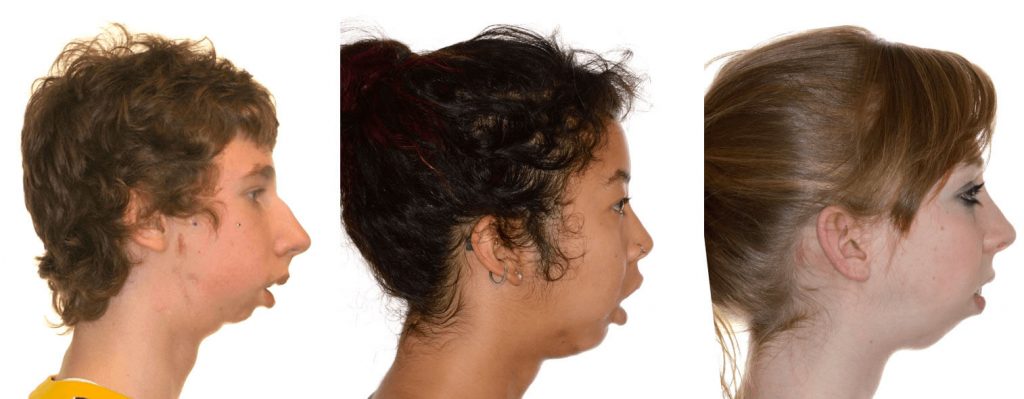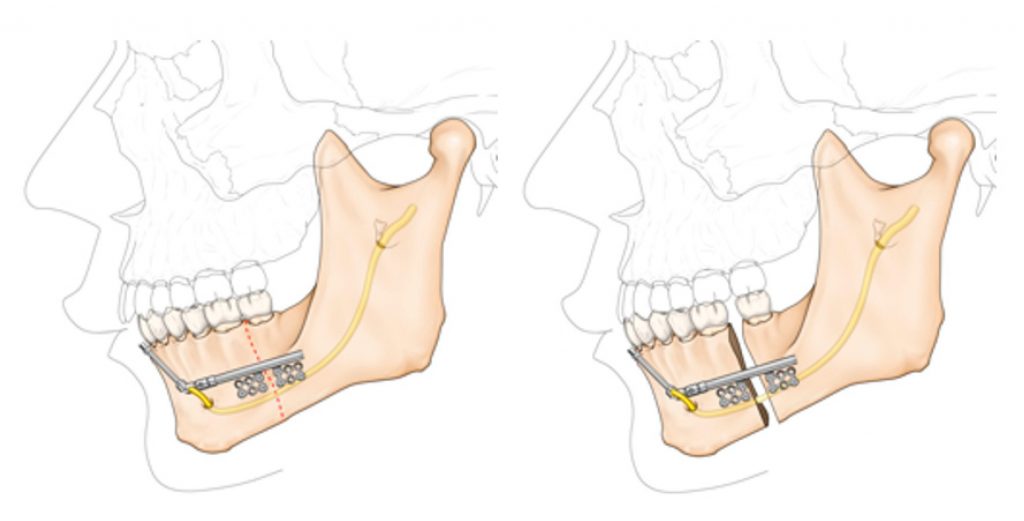What is Micrognathia? Its Causes, Diagnosis and Treatment.
As you would understand from the word something here is Micro or Small. Micrognathia means a small lower jaw than usual. The upper jaw protrudes further, and the lower jaw has underdeveloped due to some reasons. This gives the face a bird face look giving a long beak like the look. More specific medical term for Micrognathia is “Mandibular Hypoplasia”.

Which age group is affected by Micrognathia?
Micrognathia is usually encountered in children. It is an inherited disorder that is present at the time of birth. Micrognathia is linked with certain genetic disorders like Progeria, Trisomy 13, and Fetal alcohol syndrome. Micrognathia can also occur due to certain mutations during the development phase of a child.
What are the causes of Micrognathia?
Most cases of Micrognathia are present at the time of birth and are congenital. However, few cases are associated with certain disorders or mutations. These genetic disorders are as follows:
Progeria
In this condition, the child ages very fast. Progeria cause child to mature rapidly and the life span of the children affected by it is very little. Micrognathia could be associated with Progeria because of the genetic mutations occurring.
Trisomy 13 and 18
Trisomy 13 and 18 refers to a genetic disorder in which there is the additional genetic material and instead of 2 Chromosomes there are 3. The numbers 13 and 18 signify from which chromosome that condition arises. This disorder causes mental and physical malformations and disruptions in the children. Micrognathia is likely to be one such disruption.
Pierre Robin Syndrome
In this syndrome, the growth and development of the baby’s jaw occur slowly which leads to a small jaw formation. Micrognathia can be associated with this syndrome. It also causes the tongue to rest backward which leads to the obstruction of the airways and causes issues with breathing.
Achondrogenesis
Achondrogenesis is a hereditary disorder in which one of our hormones secreting gland known as the Pituitary gland does not produce enough growth hormone. It hinders the growth and causes the development of a smaller jaw and leads to Micrognathia. It also affects other parts of the body and leads to a narrow chest, short neck and torso, and short arms and legs.
Treacher Collins Syndrome
Treacher Collins syndrome causes abnormal facial features that are usually severe. This syndrome hinders the growth of the lower part of the face and affects the jaw, cheek bones, and sometimes eyes and ears.
How can we diagnose Micrognathia?
Usually, micrognathia is diagnosed at the time when the child is born. A doctor or dentist that specializes in the head and neck area will be able to provide a definitive diagnosis which would help them suggest the best possible treatment option.
Sometimes Micrognathia is diagnosed later on in infancy due to certain difficulties that the child faces. Due to a small jaw, the child finds it difficult while they suck their mother’s breast which ultimately leads to slow weight gain and development. The child might face difficulty in breathing and even cause noises while breathing. Certain diagnostics tests like CT scans and x-rays are required for a better view of the condition.
Micrognathia can also be diagnosed while the child is inside the mother’s belly. The ultrasound imaging during regular check-ups can help the doctor diagnose Micrognathia at an early stage and help them with informing and counseling the parents and help them with suitable treatment options.
How can Micrognathia be treated?
Micrognathia can resolve on its own in some cases. This usually happens in the period of 6-18 months of the period after birth. Hence tracking the development of your child is important and can help with the further treatment plan. There are different ways to treat Micrognathia. There are surgical and non-surgical ways to treat Micrognathia. Let us have a closer look at each treatment option.
Non-Surgical Treatment Option
The non-surgical methods usually focus on maintaining the breathing and airway passage for the child. The issues with airway maintenance worsen while sleeping hence your doctor will suggest good sleep routine practices which include suggestions for various sleeping positions that help maintain good breathing. Certain instruments also help with maintaining the air passage. These include nasopharyngeal pipes that are inserted in the nose and pass through the throat. Also, some patients are prescribed CPAP which helps maintain a positive air supply. Any of these methods or a combination of these methods can be used in the treatment of Micrognathia.
Surgical Treatment Option
The main motive of any treatment of Micrognathia focuses on maintaining the airway. There are three main surgical treatment options that can be considered for Micrognathia namely Tracheostomy, Tongue and lip adhesion therapy, and Mandibular Distraction Osteogenesis.
Let us discuss each one briefly.
Tongue and Lip Adhesion
In this treatment option, the doctors surgically alter the attachment of the tongue. The tongue is attached in such a way that the breathing obstruction is relieved and the child feels more comfortable.
Mandibular Distraction Osteogenesis
In this choice of treatment, the surgeon puts certain devices in the lower jaw in order to promote bone growth. The bone growth occurs in that area and thus helps protrusion of the lower jaw. This is an invasive method but it improves the condition in a very short frame of time. However, it involves some risks like infection and nerve damage.

Tracheostomy
Another invasive method of treatment is Tracheostomy. This procedure involves creating a hole in your neck and inserting the tube into the wind pipe. This insertion helps in airway management. This procedure requires utmost care and is usually the last option of treatment.
Frequently Asked Questions for Micrognathia
Can Micrognathia corrects itself?
Well during growth it usually corrects itself. The problem arises because of certain syndromes or inherited disorder.
What happens if you have a small jaw?
This condition is known as Micrognathia. There might be breathing and feeding problems with small jaw, but in most cases it correct itself during growth.
How do you fix a small lower jaw?
Most likely the surgery is needed. Sliding genioplasty and chin impants surgery helps with this.
References
Micrognathia & Pierre Robin Sequence. (2015, October 20). HealthyChildren.Org. https://www.healthychildren.org/English/health-issues/conditions/Cleft-Craniofacial/Pages/Micrognathia-Pierre-Robin-Sequence.aspx
Enlow E, Greenberg JM. Clinical manifestations of diseases in the newborn. In: Kliegman RM, St. Geme JW, Schor NF, Blum NJ, Shah SS, et al, eds. Nelson Textbook of Pediatrics. 21st ed. Philadelphia, PA: Elsevier; 2020:chap 119.
Hartsfield JK, Morford LA. Acquired and developmental disturbances of the teeth and associated oral structures. In: Dean JA, ed. McDonald and Avery’s Dentistry for the Child and Adolescent. 11th ed. Philadelphia, PA; 2022: chap 3.
Resnik R, Lockwood CJ, Moore TR, Greene MF, Copel JA, Silver RM. Imaging of the face and neck. In: Resnik R, Lockwood CJ, Moore TR, Greene MF, Copel JA, Silver RM, eds. Creasy and Resnik’s Maternal-Fetal Medicine: Principles and Practice. 8th ed. Philadelphia, PA: Elsevier; 2019:chap 23.
Micrognathia. (2021). Children’s Hospital of Philadelphia. https://www.chop.edu/conditions-diseases/micrognathia


